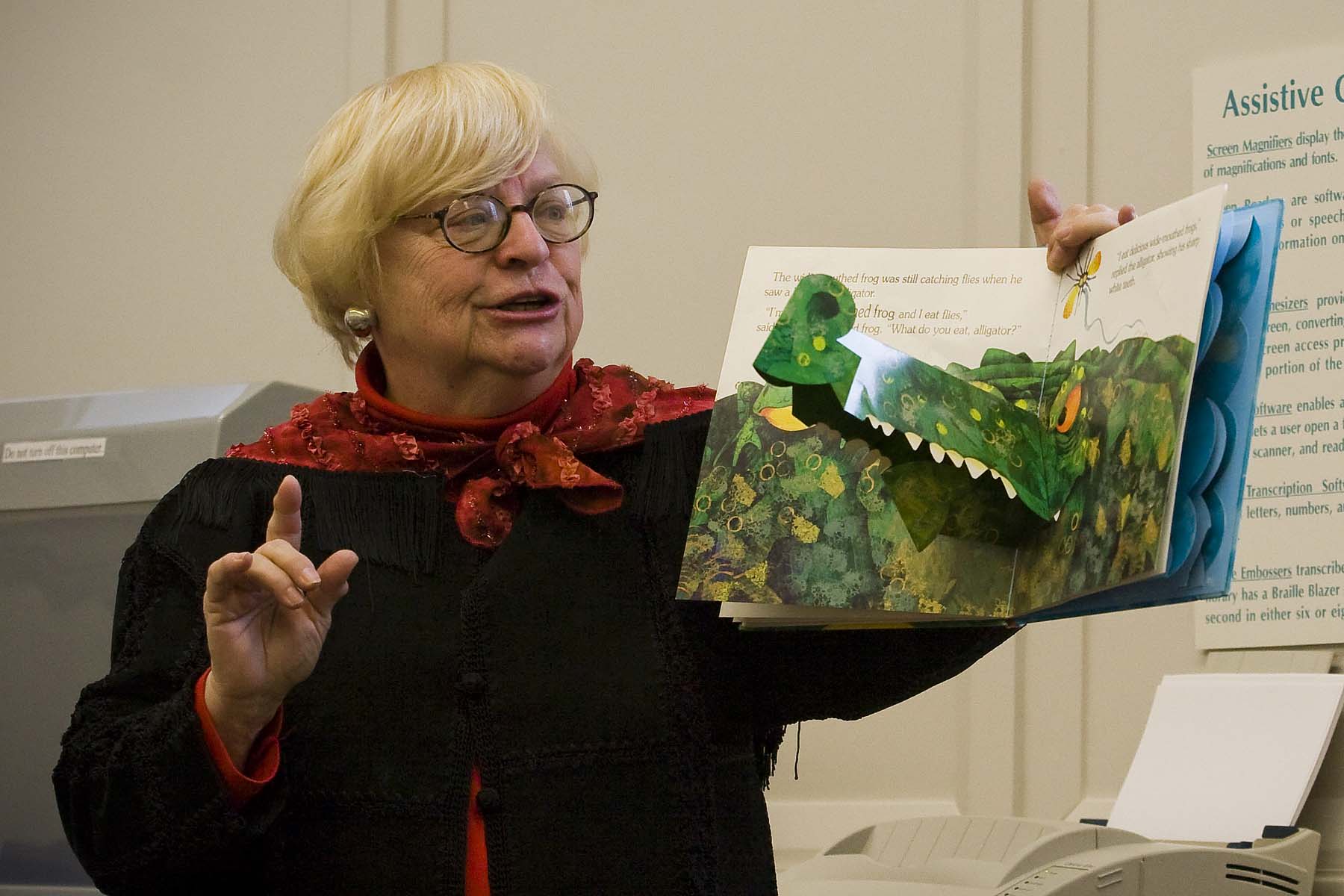
Resource
Pre-Emerging and Emerging Literacy Skills
This checklist of pre-emerging and emerging literacy skills may be helpful to teachers, families, and others in identifying areas to target in the development of literacy skills in young children who are blind or visually impaired.
This checklist of pre-emerging and emerging literacy skills may be helpful to teachers, families, and others in identifying areas to target in the development of literacy skills in young children who are blind or visually impaired. The list includes skills that a child may demonstrate, as well as actions that a teacher can take to encourage the development of literacy skills.
Child’s Behaviors That Demonstrate the Development of Literacy Skills
- Sound awareness
- Pronounces most phonemes correctly
- Uses language incorporating simple sentence structures to inform, make requests, meet social and emotional needs
- Asks questions when something is not understood
- Names most things in their immediate environment and enjoys learning new vocabulary within concrete and high interest experiences
- Listens to and enjoys stories read in “one-on-one” or small group situations
- Visual discrimination: sorting, matching, learning patterns, sequencing
- Discusses pictures / illustrations
- Incorporates words and phrases from books into their play
- Responds to stories through drawing
- Incorporates story elements into their play
- Enjoys and participates in language games showing awareness of rhyme and alliteration of initial consonants
- Makes auditory discriminations of sound in the environment
- Awareness of sound qualities (high pitched/low pitched, loud/soft, fast/slow)
- Recognizes and imitates short sound sequences making use of concepts of first, last, middle, same and different
- Recognizes symbols (symbols next to their names, pictures of toys on the shelves to assist in clean-up time, cups from McDonalds, Burger King, Hardees, boxes from Pizza Hut, Domino’s, cereal boxes, etc.)
- Recognizes shapes in the environment and in printed materials
- Copies /draws simple shapes and lines
- Letter recognition (formation and letter-sound relationship)
- Makes visual discriminations between a few letters
- Writes own name using letters and letter-like approximations
- Shows interest in magnetic letters, making letters in sand/salt
- Shows interest in alphabet and one-letter books
- Repeats short sentences with varying forms
- Displays enjoyment of and interest in books, choses books independently, requests rereading of favorite books, talks about books they like
- Holds book correctly (holds book upright, turns one page at a time, looks at the pictures on the left page before going to pictures on right page)
- Shows an awareness that the text of favorite book is consistent and/or that the story stays the same across readings
- Recognizes environmental print that is connected to their own experiences
- Uses a combination of scribbling, letter approximations and letters to write own name and other meaningful words and phrases
- Imitates reading and writing behaviors
- Communicates through and about their drawings
- Dictates short stories to accompany drawings
- Uses literacy materials provided at structured play centers in meaningful ways (have notepad in housekeeping center for taking order, writing grocery lists, etc., notepad in blocks to draw structure before they build it, etc.)
- Gives simple descriptions of past experiences
- Shares information from TV programs, field trips and informational books
- Makes connections between story events and own experiences
- Distinguishes text from illustrations
- Demonstrates book knowledge: cover, front/back, right side up, turns pages one at a time
- Participates in framing and counting words in the morning message
- Recognizes and imitates sound sequences making use of the concepts of repetition and pattern words
- Counts words in spoken sentences and claps the syllables in spoken words
- Segments familiar compound words
- Creates rhymes and short phrases using alliteration
- Writes name and a few high frequency words correctly
- Forms most letters correctly
- Recognizes and names most of the letters of the alphabet
- Shows awareness of the sounds to the corresponding letters consistently
- Reads classroom labels, signs and other environmental print
- Recognizes a few high frequency words (Dolch words, word wall, symbol reading)
- Predicts what might happen next in a story
- Shows an interest in authorship (draw attention to authors and illustrators)
- View sself as a reader and writer
- Draws connections between children’s experiences and those of characters in books
Teacher or Adult Behaviors to Promote the Development of Literacy Skills
- Oral stimulation and development of vocabulary
- Create a community of learners in which each child is valued and supported in taking risks with his/her literacy learning and children are encouraged to help each other
- Read books for children’s enjoyment on a daily basis
- Reread children’s favorite books
- Engage children in informal conversations and show an interest in what they say
- Engage children in language play with finger plays, rhyming games, tongue twisters
- Sing, chant and recite poems, songs, and nursery rhymes with children on a daily basis.
- Draw children’s attention to letters and letter sounds in their own names and in environmental print
- Support literacy-related play activities
- Encourage children to experiment with writing and reading behaviors
- Create a print-rich environment
- Demonstrate the foundational literacy concept that what can be said, can be written and read through activities such as morning message and the creations of short experience charts
- Model reading and writing behaviors
- Create and maintain classroom libraries and well-stocked writing centers
- Believe in each child’s desire to learn and in his/her unique set of abilities
- Show an interest in reading and writing for enjoyment and talk with children about personal reading and writing interests.
- Give children time to show understanding of books through talking, drawing and dramatizing meaningful parts
This article was originally posted on the BrailleSC website, which was funded by a grant from the US Department of Education with support from the University of South Carolina Upstate and The Maryland Institute for Technology in the Humanities.
